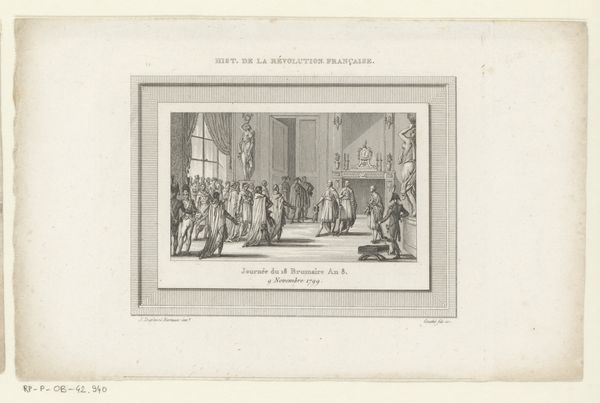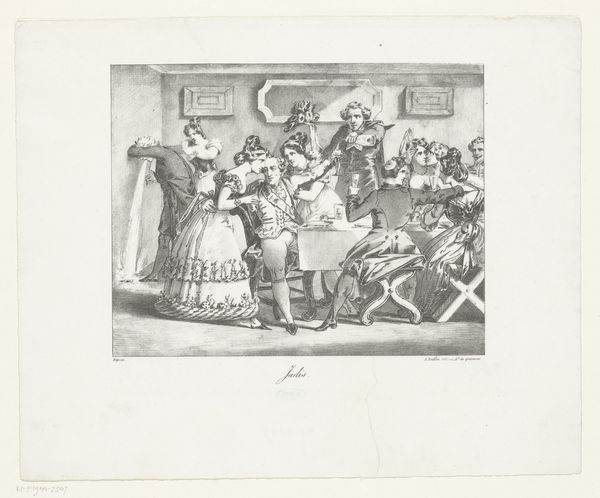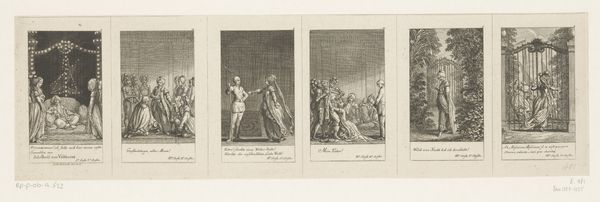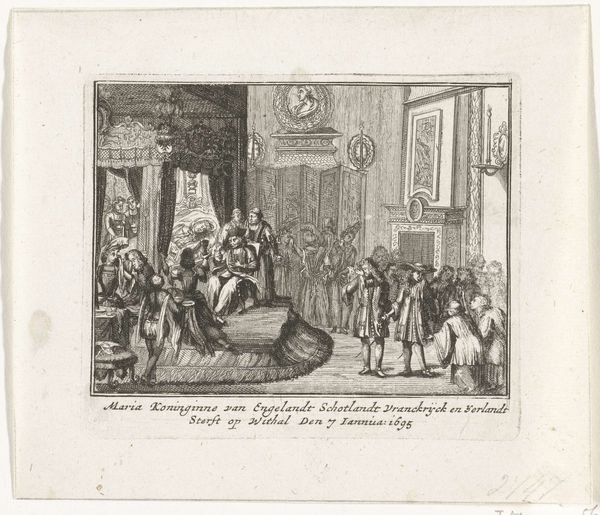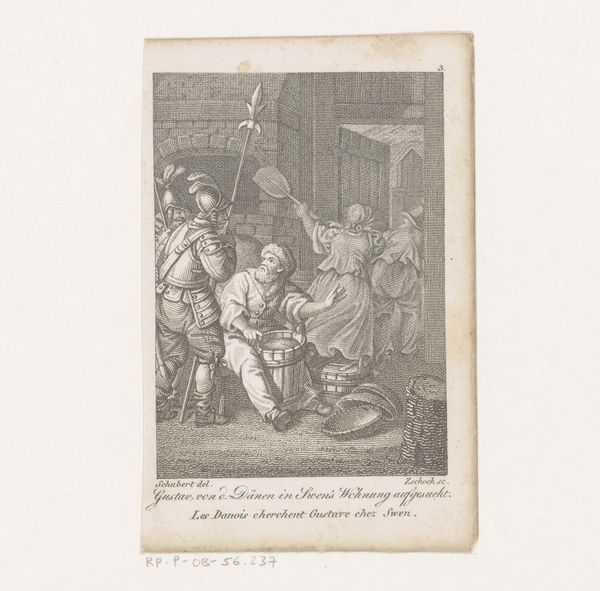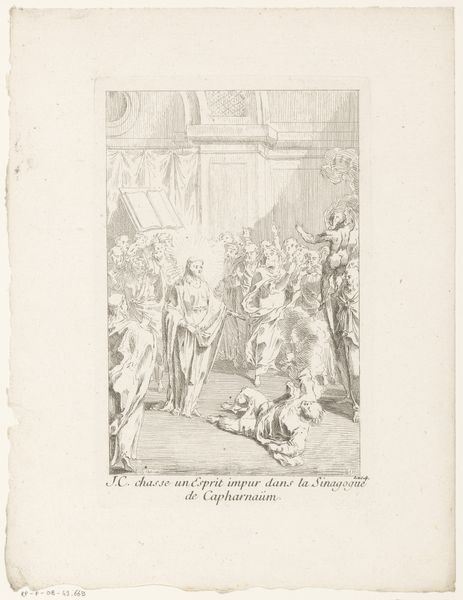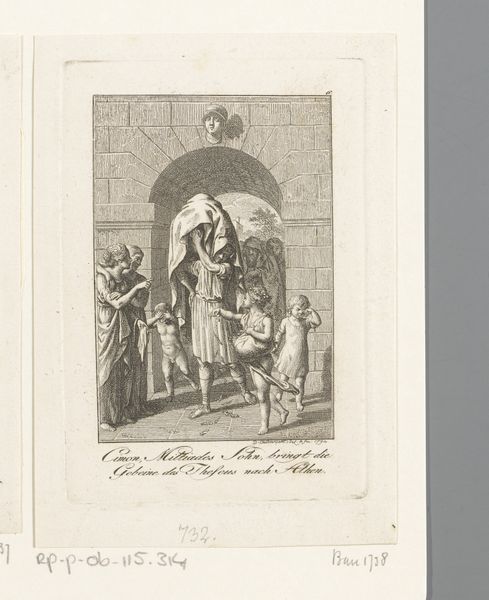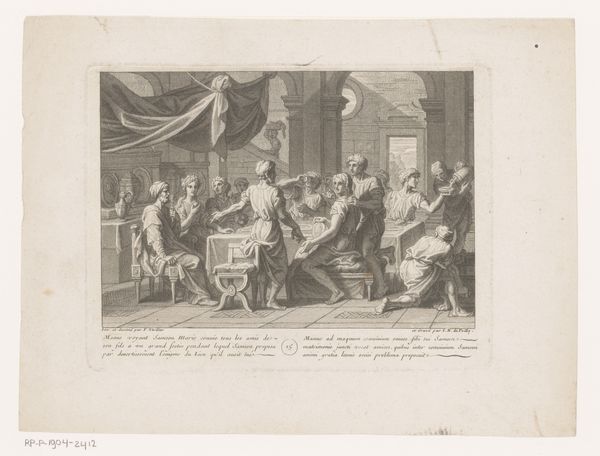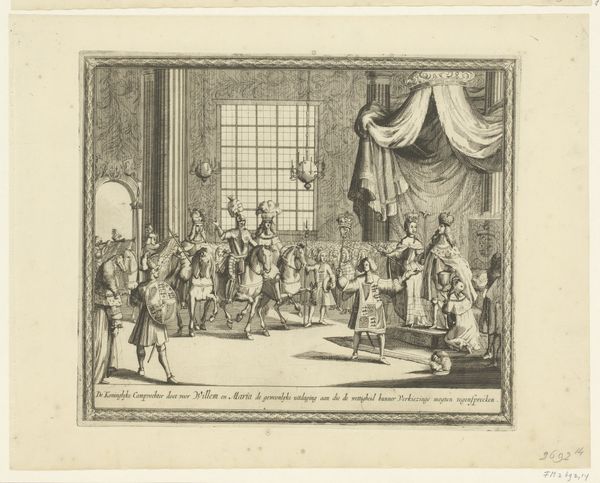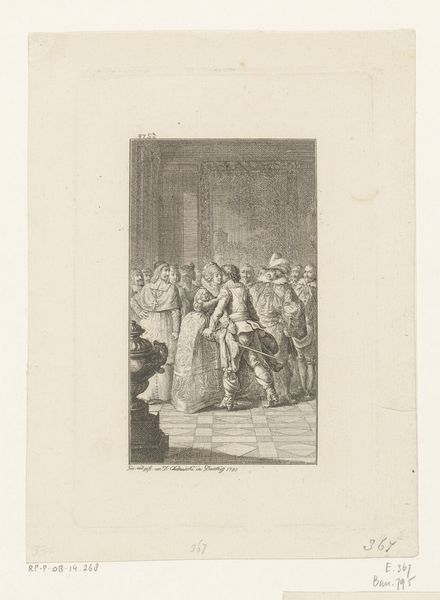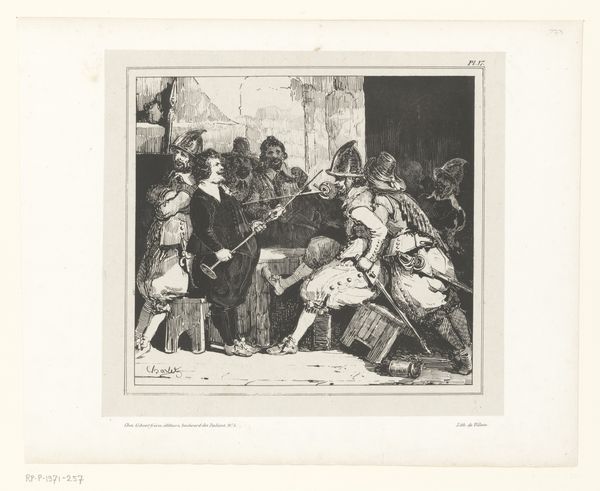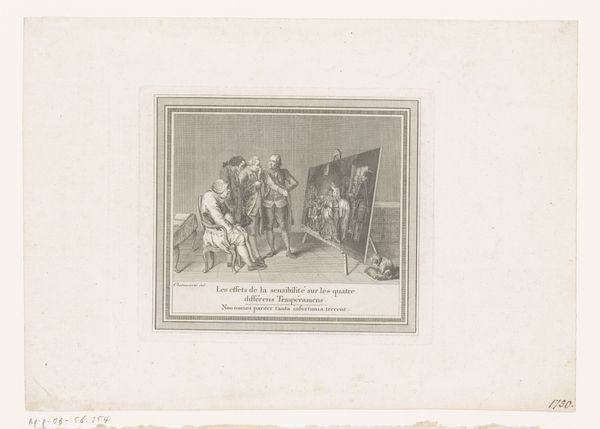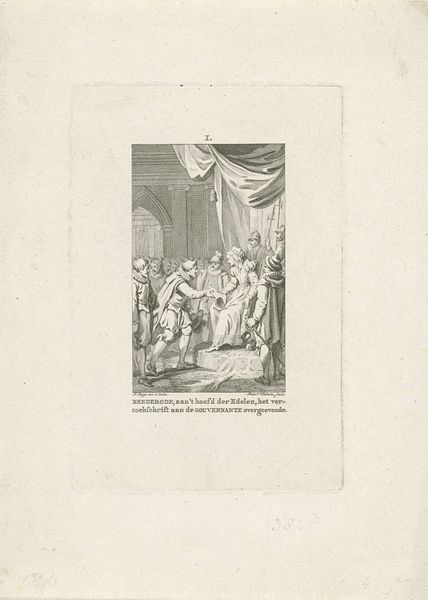
print, engraving
#
neoclacissism
# print
#
figuration
#
line
#
history-painting
#
engraving
Dimensions: height 110 mm, width 74 mm
Copyright: Rijks Museum: Open Domain
Editor: Here we have Daniel Nikolaus Chodowiecki's 1794 engraving, "Theseus vangt de stier van Marathon," housed in the Rijksmuseum. The figures are meticulously rendered in such stark lines. The scene feels incredibly staged, almost performative. What strikes you most about this work? Curator: For me, it’s about unpacking the mythology within the political and social context of the late 18th century. Neoclassicism often served as a visual language for power and order during periods of revolution. How might this triumphant return of Theseus, a clear representation of conquering the wild, resonate with contemporary anxieties about social control and the ‘untamed’ masses? Editor: So, the act of capturing the bull is more symbolic than literal? Curator: Precisely. The bull itself can be interpreted as representing chaotic forces that threaten established social hierarchies. Consider how the narrative might have been used to reinforce ideas about civilized society taming perceived barbarity, a narrative which is deeply implicated in colonialism. How does it sit with you that the Athenians are positioned as passive observers of this violent capture? Editor: It's unsettling. They seem to be celebrating domination. This makes me consider whose stories are being valued, and whose are being suppressed, through art like this. Curator: Absolutely. By examining the ideological underpinnings of the artwork, we can really begin to unravel its complex relationship to power, control, and cultural narratives that are still relevant today. Editor: I see this work in a completely new light now! Thank you!
Comments
No comments
Be the first to comment and join the conversation on the ultimate creative platform.
